Dogs need to know what they can do, where they can do it and for how long; in Shooting Times Ellena Swift explains why she sets rules from day one
Dogs, like humans, need rules and boundaries, so they know what to expect, what is acceptable and what is not. In the early months, this is vital. For example, if your puppy is not allowed on the sofa, then it is important to not allow it on the sofa. This may sound glaringly obvious; however, these inconsistencies are more often than not the reason why a dog behaves a certain way.
Why rules for working dogs are key
Pulling on the lead or not walking to heel are among the most common problems I help clients with. Pulling tends to begin at an early age, most generally shortly after the puppy’s introduction to the lead. In a bid to get it out and about, the owner rushes to socialise the puppy by proudly being dragged around public places while people gush and coo at how cute the puppy is on two legs at the end of the lead.
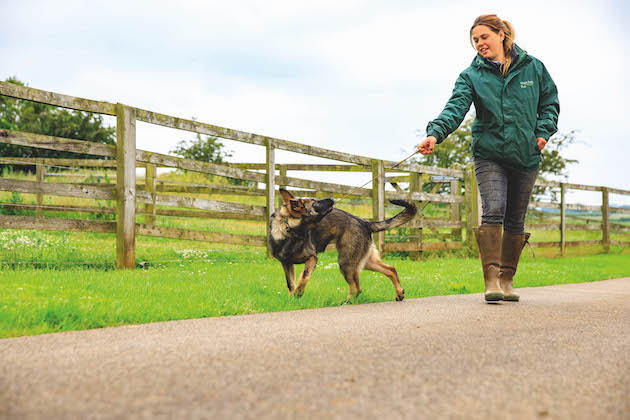
Pulling on the lead or not walking to heel is one of the most common problems Ellena helps clients with.
Every time the puppy greets a dog or human, they do it before their owner and by pulling on their lead. But it is OK because “he just wants to say hello” and “she just wants to play”. A few weeks later, the owner enrols in training and the heelwork begins. Despite the puppy only being 13 weeks old, they have already been taught to pull like a train on the lead when they want something.
While the owner might talk about rules for working dogs , they have already broken their own. They also refuse to impose rules on anyone else. It is vital when out with a puppy that not only do you control them, but also the people and dogs around you. For example, when someone gushes over your puppy, encouraging and rewarding them to jump, pull and ignore you, tell them to stop. They are not to look, touch or talk to the puppy until the owner says it is OK.
Now, this may sound extreme and will certainly invite some rolled eyes and mutterings from others. However, by doing this, you can take your time to settle the puppy. Get its focus and reward it. Once it is listening to you and on a loose slip lead, you can then use your release command so that the puppy may greet the other dog or person. This way, from day one, pulling and ignoring you will have achieved nothing.
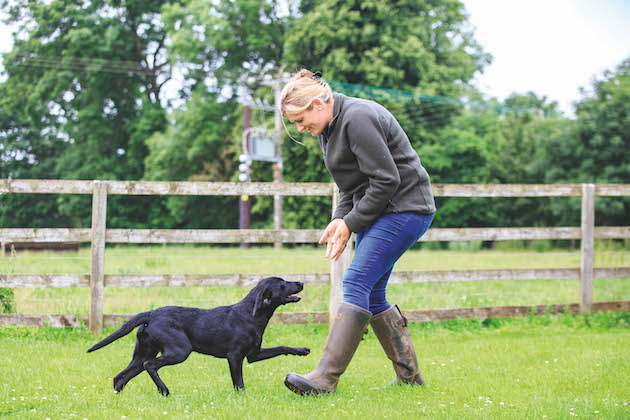
Ellena spends a lot of time with her puppy, playing and bonding, to ensure she is the dog’s favourite
Bond
In those moments when it is not appropriate to stop and greet a dog or person, the puppy will not be pulling but focusing on you. It will become second nature to engage with and focus on you. By the time the puppy is old enough to start visiting busier, more distracting environments, you already have the start of a lasting bond.
With my five-month-old puppy, I have only just introduced the lead. When I have her out where there are other people or dogs, I make sure I can control both the environment and the puppy. I do not allow her to greet others until I say it is OK. If she is allowed to play with other dogs, I ensure I am there to supervise and interrupt if it gets too rough. I spend a lot of time with her, playing, bonding and getting her to chase and follow me. These rules will continue to ensure that I am always her favourite.
Already, at only five months old, she will choose to engage with me over other dogs and people. I am now slowly introducing the lead so I can put her in more distracting situations. I have every confidence she will succeed because of these basic rules I have introduced and upheld from the beginning.
When I instil these rules for working dogs, I keep everything else very basic. I do not rush, for example, steadiness on a retrieve, the stop whistle or even delivery. The games I play encourage a good hold and start to build habits that will prove helpful in their future training — for example, we play with a ball that later on will become a key tool in our training.
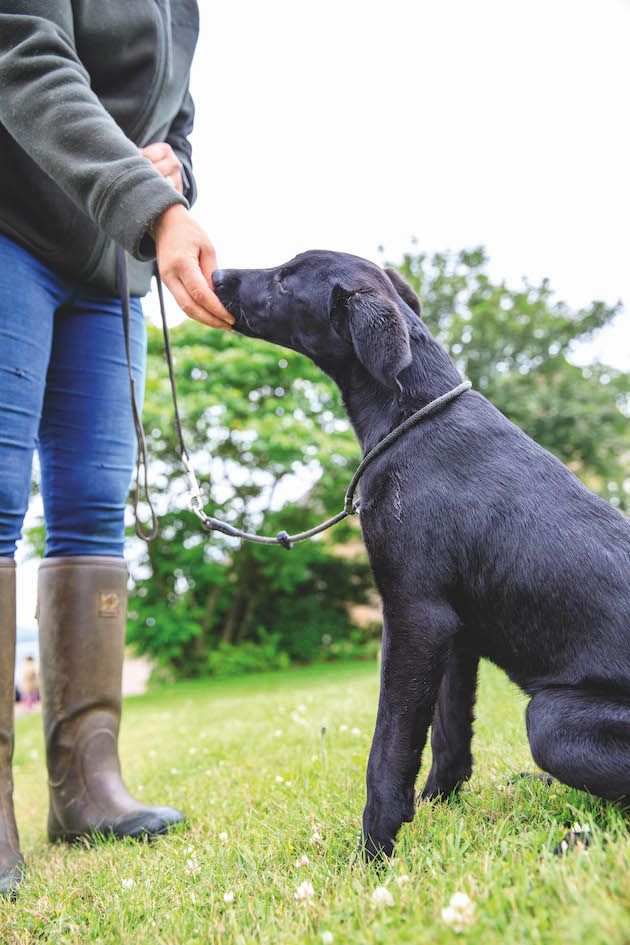
Ellena is slowly introducing the lead to her puppy
Instinct
So why is it that so many claim the puppy has gone off the rails at such a young age? Most will blame the ‘teenager time’ they are going through. But the reality is the dog is not a human or a teenager but simply growing and learning. They do not have a desire to rebel but simply do what they know. If the rules have been unclear, they may choose the undesirable option because in the past it has proven more fun. Or in that moment, instinct tells them it would be more fun.
Take, for example, a bolting rabbit. Instinct will tell a dog to chase, offering adrenalin and a thrill like no other. In that instant, instinct will take over. But this is a prime example of too much, too soon. The dog at this early age is not equipped to deal with certain situations, so until they are ready to cope should not be heavily exposed to them. Once they are ready, you should ensure the environment is as controlled as possible.
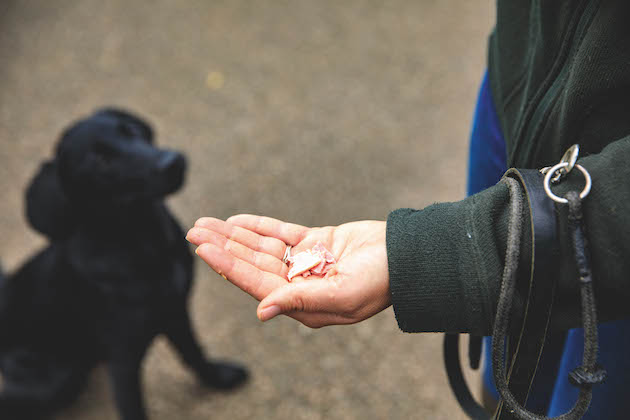
Many owners have an over reliance on treats
Focus
One of the issues is that owners have one tool in their kit and one only: treats. I see so many owners battling with dogs, treat in hand, the dog paying little to no attention until it decides to. In an ideal world, every dog would do everything we asked for a biscuit. But the reality is very different. When I want focus from my dogs, I insist on it.
This does not mean we need to bully, shout, beat or any other dramatic and undesirable behaviour. But I do ensure that when I want focus, I get it. This often will require me making a noise — with puppies this is normally a little high-pitched squeak. It may require the assistance of a ball or treat. And if all else fails, I will use the lead. But I will get that focus. Any reward will follow the focus and not the other way around.
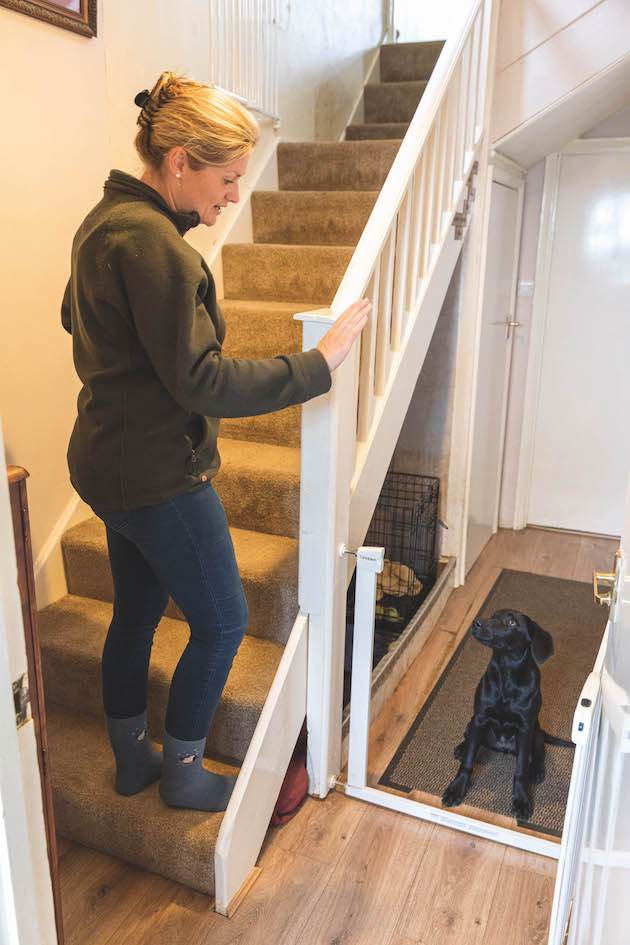
Ellena’s dogs are not allowed upstairs, they live downstairs from day one – unless invited
Consequences
So many people believe in setting boundaries, structure and rules with their children but are afraid to do so with their dogs because it may be perceived as ‘mean’. Implementing rules for working dogs does not have to include punishment as is often assumed, but it must include consequences.
For example, if a puppy lunges on the lead to greet another dog, the consequence is that the puppy is brought back to heel using the lead and asked to sit. If the puppy sits and offers focus on the handler, they are rewarded with a treat, fuss, toy or verbal praise. If they lunge again, they are brought back to heel again. With consistency, time and patience, the dog will understand. There will be no grey areas.
In a second example, a puppy on a long line is recalled when it sees a distraction. The puppy stares at or tries to move towards the distraction. Using the long line, the puppy’s head is turned towards its handler. As the puppy looks at the handler, the hander praises verbally.
If the puppy then turns back, the same routine follows until the puppy willingly offers focus on the handler. As they do, the handler encourages the puppy in and once alongside the handler, it is rewarded. So the consequence of ignoring achieved nothing, but once beside the handler, they were rewarded.
As a handler, you must have several tools available to you to ensure you promote and reward the right behaviours. Relying on only one is naive and bound to end in failure.
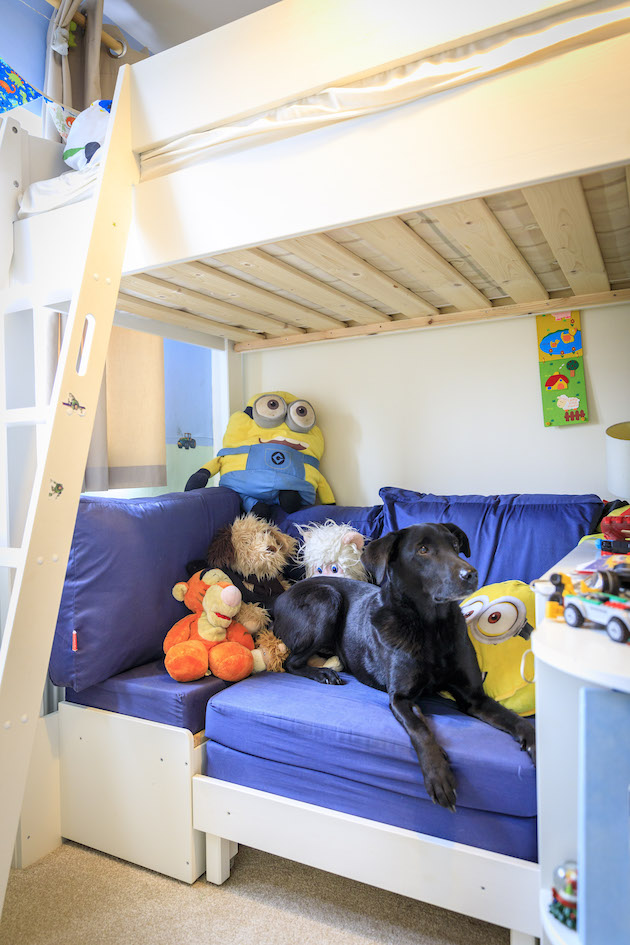
Older dogs may get the privilege of sleeping in a bedroom, but will go downstairs when told
Bending the rules
So are there ever times when the rules for working dogs can be bent or broken? As the dog gets older and their commands are solidified and consistent, there are times when it is not the end of the world. For example, my dogs are not allowed upstairs. From day one, they live downstairs. However, there are occasions when my children like to have one of the dogs up there. It is always an older dog that is invited up. They get the privilege of sleeping on my son’s bed or in a bedroom. However, this does not mean that when told to go downstairs they do not go. The rule is still to listen to me.
Not long ago, I was staying away for a competition. I had a dog-friendly hotel room and had taken a blanket for them to sleep on. I invited both dogs on to the bed, which is where they slept. In the morning when I got up, I told them both to get down, which they happily did and sat on the floor. Since being home, neither dog has attempted to go upstairs or sleep on my bed. If they did, they would be quickly removed back downstairs. Just like greeting a new dog when they were a puppy was done on my say so, they are invited upstairs on my say so.




